The food and drink trends of 2023 will most likely be influenced by macro factors, such as the cost-of-living crisis and produce availability – for example, the conflict in Ukraine has affected the export of popular products like sunflower oil, corn and cereal crops.
This doesn’t mean we won’t see trends related to personal taste and the growth in appetite for international flavours and cuisines, but we are likely to see more of a push for what is available and what is affordable.
Let’s explore the food trends of 2023.
Plant Based Proteins – Now Including Seafood
Vegan and plant-based diets are firmly established in the food scene. Flexitarianism was a trend in 2022. In 2023, we expect to see consumers continuing to seek out meat alternatives and this year alternative seafood will be added to the mix. Restaurateur Carmen Rossi told Parade magazine that “we should expect to see alternative seafood ingredients and protein-based substitute options of meat alternatives with plant-based ingredients on the menus”.
Interest in vegan fish has been growing over the past decade. In 2023, we might reach the point where demand meets availability.
Not-fish fingers, fake smoked salmon and even vegan tuna have started to appear in supermarkets in the last few years. In 2023, we can look forward to a more diverse menu of seafood-not-from-the-sea. For example, The Plant Based Seafood Co launched their plant-based scallops in 2023.
More Affordable Alternatives
The Waitrose 2022-23 Food Trend Report revealed an interesting trend: affordable alternatives. This covered a range of food choices and habits, and fits with the growing concern about rising food prices – a third of respondents to the survey were “very concerned” about the cost of living.
Proteins: Cheaper Cuts Of Meat, Tinned Fish And Skipping Meat Altogether
The survey found that 45% of consumers were considering less meat or cheaper meats, such as chicken thighs instead of breasts. They also found that cheaper cuts of meat, such as beef shin, ox cheek, lamb neck and fish heads showed an increase in popularity last year, up by 23%, 9%, 4% and 34% respectively.
Canned foods grew in popularity in 2022 too, from tinned fish (specifically pilchards) to spam – if you can believe it. Canned pork and ham searches grew 36% last year, suggesting that people were looking for longer lasting and cheaper meat options.
Some are even skipping meat altogether. And this isn’t because of a plant-based or vegan diet, it’s because of cost.
Cheaper Food Products
Consumers were found to have started swapping a range of food products for cheaper alternatives – even where they aren’t quite like-for-like. 32% have moved to vegetable oil instead of olive oil and 21% have swapped bagged fruit and vegetables to loose produce to avoid buying more than necessary.
Ways To Reduce Food Waste
Environmentalism and climate change concerns continue to be important to many consumers. Vivek Singh, executive chef at The Cinnamon Club in London, told BBC Good Food that “no or low waste is going to be even bigger in 2023, particularly by using unusual parts of vegetables and meat”. Alongside plant-based diets, there is a continued push to find innovative ways to minimise food waste.
Good Food offers tips on how you can use fruit and vegetable scraps to make soups, purees or crisps. And Bon Appetit has advice for using leftover herb stems for stock, pesto or salsa verde.
Meal Planning & Batch Cooking
The 2022 BBC Good Nation Survey found that both food planning and batch cooking were not only a current tactic but likely to be on the rise. 23% of respondents were already using batch cooking to better control their food costs, while 28% found that meal planning was key to saving money on their grocery shopping.
Slow Cookers
Interest in slow cookers and recipes for them often peaks in the winter months in the UK – as one would expect. But given the new peaks we saw in 2022, as early in the year as October, for ‘slow cooker recipes’, it seems that more and more people will be looking to get their slow cookers out to make batch cooking easier for more of the year.
Alcohol-Free All Year Round
The uptake of alcohol-free beer has preceded a wider move towards low-alcohol and non-alcoholic drinks as standard in the last few years – in a similar way to how veganism has grown and become a staple of most restaurant menus. Skipping alcohol is now looking to become an all-year round choice for many, not just for Dry January or a casual month off (for health reasons).
Google Trends also shows us that interest in alcohol-free and low-alcohol beverages is increasing, including consideration for low alcohol cocktails.
Asian Foods, Flavours & Fads
There are some exciting additions to the food and drink scene in 2023, including inspiration from a variety of Asian countries and cuisines. Japanese flavours and ingredients were already trending in 2022 and while there is more to come from Japan in 2023, consumer interests are now venturing further afield to the countries that cover the breadth of East and South Asia.
If you’ve spent any time on TikTok, you will know how popular international foods and drinks have become online, due to their uniqueness and diversity. Expect to be introduced to a new range of Asian ingredients, foods and drinks this year.
Itameshi – Italian and Japanese fusion cuisine
Fusion cuisine is something of a fad favourite within the culinary space, though the popularity of each fusion has as much chance of being a flash-in-the-pan as it has of becoming a staple – TexMex has lasted in the US in a way that few could have predicted. Yet, dining would be at a loss without a bit of food fusion. Italians took tomatoes from the Americas, the Portuguese brought chillies to India, the Vietnamese banh mi owes its origins to French bread being transformed by local flavours.
Delish magazine reports that the next big fusion is here and it is Italian meets Japanese. After more than 40 years of fusion attempts, this one claims to be smarter, more culinarily specific and less whimsical than its predecessors. The Icca restaurant in New York City is one of the leaders in itameshi. One offering from them is an eggplant katsu, another a ‘pizzette fritte’ combining a scallion pancake with prosciutto. We’ll have to wait and see if these interesting food fusions make it across the pond.
Ube – most commonly found in Filipino desserts
Ube is a vibrant purple yam with a sweet flavour, similar to a sweet potato, but with a nutty, vanilla twist. Hailing from the Philippines, it is commonly found in Filipino desserts. According to the 2023 Hospitality Trends report, 2023 is going to be a bumper year for this captivating ingredient.
Salted Egg Yolk Drinks – sweet meets savoury
Salted Egg Yolks, if you don’t know yet, are a popular ingredient in Asian cakes and desserts, as well as being used in noodle dishes. It has a strong umami flavour, with the saltiness of a preserved food and the butter sweetness of a poached egg.
2023 is looking to be the year of the salted egg yolk drink. Perhaps following the TikTok boom in 2020 of the South Korean Dalgona Coffee, a creamy whipped coffee drink, similar beverages using salted egg yolks might be this year’s surprise hit. For example, Salted Egg Yolk Custard Latte or Salted Egg Yolk Latte with Buñuelos.
Kuih – bite-sized Malaysian cakes
Malay kuih is a broad name for what can be a variety of pastries that are steamed or grilled. Most traditionally, kuih is a combination of mashed bananas and shredded coconut that is steamed in a banana leaf parcel. If you are a fan of interesting, pretty and flavourful sweet treats then you should seek out these Malaysian cakes. Time Out has a solid list of varieties of kuih if you want to get your mouth watering.
2022 Food Trends: Flexitarianism, Nostalgia & Potato Milk
2022 is going to be a fascinating year for food in the UK. COVID-19 may be still prevalent but hospitality is open and people are eager to be out and about.
We are also living in a post-Brexit world, which hasn’t been without its hiccups as changes in import and export legislation, both food and non-food, have had a knock-on effect on the availability of produce on our shelves.
Add in that many have reignited their love of food and cooking over the past two years during the numerous lockdowns, and the scene is set for a possible culinary revolution.
Below, we look at the 2022 food trends to watch out for.
Flexitarian Diets
This isn’t a fad diet, this is a way of life – or at least eating. Veganism has been on the rise, but that doesn’t mean people are ready to give up eating meat altogether. Instead, some are adopting a flexitarian diet where they eat some vegan meals, some vegetarian, and opting for sustainable meat sources when they can.
Flexitarianism gives people the flexibility to adjust their diet according to how they feel, the ethical meat options on restaurant menus and supermarket shelves, and doing their part to combat climate change.
Evidence of this shift in diet comes directly from one of the biggest supermarket chains. Waitrose’s latest Food & Drink Report found that many customers were eating meat just two days of the week, a considerable but unsurprising shift. Additionally, Whole Foods Market’s latest Trends Council report noted ‘reducetarianism’ was on the rise – people reducing their meat intake.
More Mushrooms
The Global Mushroom Market Report 2021 noted a 9.5% increase in the market size for mushrooms around the world. These fungi are fast becoming a popular ingredient thanks to the growth of vegan and flexitarian diets. The humble mushroom has been sought out both as a home-cooking ingredient and a flavouring for plant-based foods, such as in burgers and hotdogs.
Mushrooms are a great source of protein, are vegan, and come in a wide variety if we include the breadth of wild edible mushrooms and not just the traditional white and brown cup mushrooms that are most visible in supermarkets. They are also good for our immune system and contain lots of vital nutrients, like vitamin D.
The possibilities for what can be done in the culinary space are still growing, particularly as the varieties of mushrooms and their capabilities are still being explored by foodies around the world. For example, a food startup in Germany has developed a chicken alternative using the Laetiporus mushroom, nicknamed: “chicken of the woods”.
A Squeeze Of Yuzu
Sour is a core element of cooking, creating zest, freshness and balance. Yuzu, a citrus fruit from East Asia often found in Japanese, Korean and Chinese cooking, looks set to be the fruit of the year.
Interest has steadily been on the rise for a while and 2022 looks likely to be the year that yuzu really makes its mark.
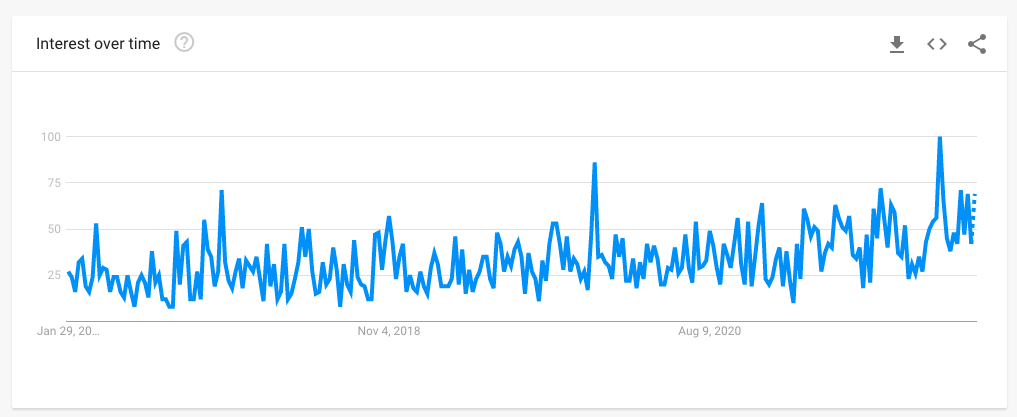
Look out for yuzu being used to add a citrus twist in fusion cooking, particularly Asian and South American inspired foods – anywhere you’d find a burst of lime or lemon. You’re also likely to see yuzu in cocktails as it takes over the upmarket menus of mixologists.
Eastern Mediterranean spices and foods
According to Waitrose’s Food & Drink Report, interest in products like pomegranate molasses, Turkish Urfa chilli flakes and Feta parcels rose considerably in 2021. Eastern Mediterranean or Middle Eastern food is known for traditional dishes like souvla (or souvlaki), hummus and tzatziki, but also includes stewed meat such as rabbit, sheftalia, a grilled pork and sometimes lamb small sausage, as well as fresh chopped salads.
While there isn’t any obvious reason why Eastern Mediterranean flavours might be dominating 2022, it could be that a longing for simple, fresh and flavourful food could be behind its rise in popularity.
Japanese flavours
Following the 2021 Tokyo Olympics, it seems those in Britain are keen to enjoy more Japanese flavours and cuisine, particularly at home. Waitrose saw a 17% increase in sales of its Umami Paste and a 54% increase in sushi sales since 2019. They also saw a 57% increase in sales of sushi mats and a 56% increase in nori (sushi wraps) in 2020, suggesting that people are really getting into making their own, home-rolled sushi too!
Of course, Japanese food isn’t all sushi. There’s a plethora of fantastic foods, from miso soup and ramen to tempura seafood and vegetables and yakitori – bite-sized marinated meat grilled over charcoal.
Nostalgic British Classics
2022 is the year of the Queen’s Platinum Jubilee and will be marked by an additional Bank Holiday on the 5th July 2022. This, combined with a renewed interest in British staples on TikTok, seems to indicate that getting back into classic British cuisine is likely for many.
Foods under consideration include: traybake iced cakes (remember them from school lunches? TikTok does), rhubarb and custard, toad in the hole and full English breakfasts – sales of eggs and bacon rose considerably during 2020 and 2021 as Brits took longer breakfasts due to working from home.
Who knows what the star of 2022 will be, it could be the comforting Shepherd’s pie or a classic trifle. Either way, it’s interesting to see how nostalgic Brits are getting about their favourite foods.
Bottled cocktails
We got a taste for bottled cocktails in 2021 when COVID-19 closed our favourite restaurants and bars. But we didn’t spend those evenings unaided. Drink delivery brands thrived during the pandemic, bringing shake-and-serve bottled cocktails to our door. Now that we’re out and about, it seems we’re still keen to enjoy a tipple in the comfort of our own homes.
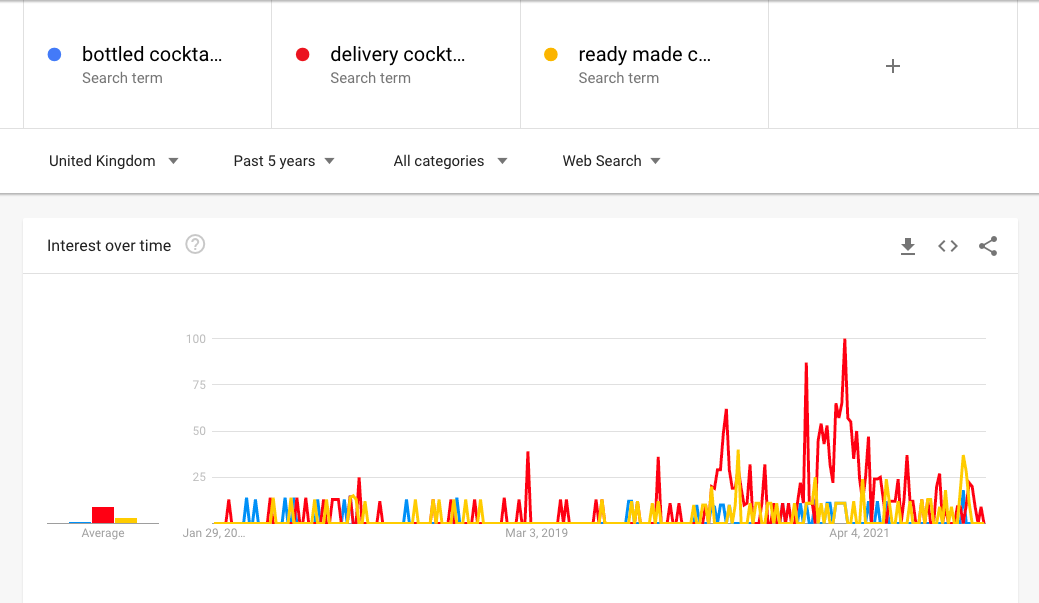
Bottled cocktails, delivery cocktails and ready-made cocktails have all been of interest, but it seems we’ll be reaching for them more often in 2022. Bottled cocktails aren’t just the purview of delivery brands either, supermarkets are growing their ranges of ready-made cocktails too.
Potato milk. Yes, really.
Do we need another alternative milk? Perhaps not, but potato milk is here nonetheless. It remains to be seen whether it could threaten oat milk as the most popular alternative milk, however, potato milk does seem to have considerable buzz around it.
You might be wondering why potato milk is even entering the market, given there are already plenty of plant-based alternatives and options that are better for the environment than traditional cow’s milk. The Big Issue shares those thoughts, noting that: “Soy farming is associated with huge illegal deforestation, while almonds require a staggering 130 pints of water for a single glass of milk.”
Additionally, potatoes are twice as space efficient to grow as oats, making them a more economical milk source. As a result, potato milk could easily grab the interest of environmentalists and take off from there. We’ll have to wait and see if people vote with their morning latte to make potato milk the favourite alt milk of 2022.
Local produce, by necessity
As a result of Brexit and the ongoing import issues in the UK, buying local produce may become a practical choice rather than an intentional one.
2022 may see empty shelves, at least for certain items, and a reduction in the variety and availability of some international foods. This will make local produce, whether in your local store or at local food markets, the new go-to. Buying locally is also an eco-conscious way of food shopping and can help to reduce food waste.
Function foods and drinks
This is a bit of broad stroke suggestion, but it is based on the trends of the past few years. As a result of the pandemic, many of us have reconsidered how we care for ourselves and what we are doing to enable healthy functioning, be it: getting enough sleep, reducing stress or ensuring we have good gut health.
We’ve seen a move toward function-boosting health foods and drinks in previous years, such as probiotics, namely in the form of fermented foods and drinks like kimchi and kombucha, stress relievers like CBD oil, and the rise of non-alcoholic drinks. The latter is also sure to have helped with sleep, since alcohol severely hampers the quality of sleep.
In 2022, we expect the more health-conscious among us to continue seeking out the most nutritional and function-supporting foods available. If it’s not adding value to our health and our ability to thrive, it’s likely to fall out of favour.
What are you craving in 2022?
These are just some of the food trends we expect to enjoy in 2022 – or perhaps not in the case of potato milk. There are likely to be some surprise entries in 2022 too. What are you looking forward to eating once you start dining out again? Or are you keen to continue cooking at home? Any surprising new flavours or ingredients on your menu?
2021 Food Trends: Virtual Home Cooking, Sustainable Ingredients & New Fad Foods
Home Cooking With A Twist
Without the option of restaurants, and apart from the occasional home delivery, the pandemic got us cooking at home more than ever. But having an abundance of time didn’t necessarily mean that home cooks knew where to start or had the will to hunt down recipes week after week. Luckily, there were lots of ways to get cooking with minimal effort.
Meal Kits
Interest for meal kits had been steadily growing for a few years, prior to the pandemic, and then boomed as a result of the national lockdowns. Door delivery of all the ingredients, in the required amounts, plus an easy-to-follow recipe card, made meal kits one of the easiest ways to enjoy fresh lunches and dinners day after day.
Popular brands like Hello Fresh and Gousto enjoyed high demand throughout 2020 and into 2021. Customers happily chose from a variety of recipe options and often balanced the occasional supermarket trip with recipe boxes to make getting a good meal as painless as possible. The health conscious also discovered independent and niche meal kit providers, such as Mindful Chef, who create health-focused meal kits.
It wouldn’t be surprising if 2020 was the first time that many people tried meal kits, and those who loved it are likely to keep that going into 2021. In fact, the increase in popularity of meal kits as a result of the pandemic could lead to more brands popping up to fill the demand, particularly around dietary restrictions (think: vegan or gluten free) or lifestyles, such as protein-rich meal kits for active gym-goers.
Take & Bake Kits
You might not have even heard of Take & Bake Kits in 2020, but it’s possible you’ve enjoyed one nonetheless. Restaurants who couldn’t serve their customers in-store quickly realised they could keep cooking, and reminding their customers they were still around, by offering not just food delivery but take-away meals that could be finished off at home. Thus, the Take & Bake Kit was born.
2021 is likely to see a slow return to normal for some people. Certainly, as restrictions ease some diners will rush back into restaurants while others will still opt for a meal at home – at least until they are able to get fully vaccinated. This means there will still be a market for Take & Bake Kits in 2021. For restaurants who found it particularly successful, it could also mean that Take & Bake Kits become part of a new, permanent revenue stream.
Virtual Cooking Classes
Recipe boxes provide an easy tutorial for those who see cooking more as a necessity than a joy. For foodies and those looking to develop their cooking skills, but who don’t want to commit to an in-person class, virtual cooking classes will be the way forward.
“Do it on Zoom instead”, was the default for most activities during the pandemic. Cooking classes were no exception. Virtual cooking classes also enabled cooking schools and food businesses, particularly smaller ones, to reach bigger groups of people than their classrooms could ever hope to. Eager bakers and wannabe-chefs could watch a cook-along, or book private virtual cooking classes, anywhere in the world, and learn to create amazing dishes.
Since 2021 will be the year of slowly re-emerging into the world, virtual cooking classes will continue to be popular, and could even stay that way for the next few years as people realise that living far apart doesn’t mean you can’t enjoy a group activity together.
DIY Pickling & Fermenting
Sourdough starters and banana bread are so 2020. The 2021 food trend for DIY eats will be pickling and fermenting. Make your own pickles, try your hand at creating your own kimchi (beware the delicious but pervasive smell), or find a new way to make use of your food waste by turning it into a fermented treat.
Pickling and fermenting vegetables is actually very simple (at least in its most basic forms) and pickles are a powerful part of a healthy diet. Both pickled and fermented vegetables are great probiotics that assist in maintaining healthy gut bacteria. For vegans/vegetarians who don’t want to consume yogurt, some of the most popular probiotics – kimchi, sauerkraut and the like – are a delicious alternative.
Sustainability is a theme of the food trends in 2021 and pickling or fermenting your own vegetables is another way that people can reduce their food waste since offcuts and ends are ideal.
Next Level Environmentally Friendly Eating
Meat replacements, particularly plant-based versions, were big in 2020, both for environmental and ethical reasons. 2021 looks set to take this food trend to the next level with new alternatives for fish, plus a more considered look at sustainability in meat and farming to satisfy both vegans and meat-eaters who care about the planet.
Plant-Based Fish
‘Motherless meat’ was big in 2020 and led to a surge in plant-based meat substitutes, with ‘beef’, in burger form, being the headliner. Chicken and pork alternatives also raised their profile in the market. Next up is fish.
Now, it should be made clear that fish alternatives, like Quorn, have been around for a while but 2021 is set to be a year that doesn’t just offer the mashed fishlike pieces, a la the fish finger, but plant-based seafood that replicates smoked salmon, tinned tuna, prawns and even caviar. Keep an eye out for Good Catch’s vegan ‘tuna’, new to the UK, and Swedish start-up Hooked.
Ethical & Carbon-Positive Farming
The ethics of food production, particularly farming, and the environmental impact of said farming have become synonymous and interlinked topics. Because of this conflation, veganism has been seen as the all-in-one solution: if no animal products are consumed, there will be no demand for animals to be farmed and therefore no ethical issues or added environmental impact from them being farmed. Meanwhile there are other people who, while not concerned about the immorality of eating animal products, are concerned by the eco-impact of the meat they do eat. This is where regenerative agriculture and farming come in.
Regenerative agriculture aims to use farming and grazing practices that work with the land to improve soil quality, restore local biodiversity, and promote carbon drawdown. Thereby providing the benefits of traditional farming– fruits, vegetables and livestock – while having a carbon-neutral or even carbon-positive impact. Regenerative farming focuses on local production and sales, steering away from mass production, which ensures there are minimal greenhouse gas emissions from food transport and no need to compromise on animal care (read: no caged chickens getting force-fed, just free range happy hens).
Eating plant-based versions of meat, fish and animal products is one way of being green and sustainable. Regenerative farming is another and if it takes off and lasts beyond a 2021 food trend then carbon-positive food production on regenerative farms could be the new food frontier.
Fine Eating Instead Of Fine Dining
Nathan Outlaw, a 2 Michelin star restaurant, is leading the tidal wave of change by relaunching as a more accessible dining experience: both in cost and in its approach to food. Other renowned chefs, like Daniel Boulud, and restaurants, such as Noma, are all pivoting from fine dining to fine eating. The distinction being a focus on high-quality, sustainable and enjoyable food, rather than on dishes that have a showy presence or an exclusively high price tag.
If there’s any 2021 food trend that is sure to get tongues wagging, and salivating, it’s this one. Given the difficulties of 2020, our priorities have shifted, and this is reflected in more people working from home, a stronger awareness of personal mental health, and an increased interest in the provenance of food. The fact that these cultural shifts have reached the tip of the culinary food chain should be seen as both exciting and impressive.
International Eating Like A Local
International cuisine has long been on the menu in the UK, both traditional iterations and local interpretations – here’s looking at you chicken tikka masala. In 2021, consumers are likely to seek out even more unusual ingredients and dishes that come from lesser known parts of the world.
Which ones really take off, only time will tell, but a few to watch out for are:
- Amchoor or amchur – a dried green mango powder often used in North Indian cooking to flavour marinades, chutneys and curries. It infuses a sweet fruity flavour without the additional liquid of a fruit juice.
- Black Garlic – this rich black garlic comes from aged, raw garlic. Through caramelisation, it takes on a sweeter taste. It is common in some East Asian cooking, such as black garlic noodles, but can be used for salad vinaigrettes or eaten as a spread on toast.
- Dashi – a Japanese soup stock. There are a number of different types which are used as the foundation of hot pots, simmer dishes and noodle soups.
- Jollof rice – a common rice dish across many parts of West Africa. It is a Nigerian staple with a well-known Ghanaian variant and includes plenty of fragrance and spice, such as cinnamon, bay leaves, ginger and chilli. It is often served with chicken, stewed meats and/or fried plantains.
- Pul biber or Aleppo pepper – after a starring role in Nigella’s At My Table cookbook a few years ago, it seems the time has come for the Turkish dried red pepper flakes to bring its rich, spicy flavour to your table.
Drinks With A Difference
With new food trends come new drink choices to wash it all down with. Following the pandemic and the changes we saw to how people consumed alcohol, or didn’t, there are going to be some interesting shifts in what drinks we enjoy with our trendy meals.
Takeaway/Delivery Cocktails
Cocktails bars are a wonderful place to try a new combination of spirits, juices and bartender-brewed infusions. Cocktails are delicious and fun, so why wouldn’t people enjoy them at home? In 2020, bars and drinks brands realised that people weren’t going to skip the cocktails just because their favourite bar was closed down, so they switched to offering delivery cocktails. Simply order to your door, shake and enjoy!
Hard Seltzer
Already becoming a firm favourite in the US, hard seltzers are set to make their way across the pond and into your drinks fridge in 2021. Combining carbonated water, flavouring and alcohol, a hard seltzer is like an adult soft drink, something adjacent to G&T in a can. The flavours are as limitless as sodas, so the market is wide open for all kinds of refreshing and rich combinations. BrewDog and Kopparberg have already brought out their own range, but for a taste of one of America’s favourite hard seltzers, look out for White Claw.
Non-Alcoholic & Low Alcohol Drinks
It seems like the sober life is being chosen by more and more people. 2020 saw a 30% increase in sales for low and non-alcoholic drinks, particularly among younger people. Across spirits, beer and wine, the desire to enjoy great flavoured drinks without the effects of alcohol are proving to be popular. This change in demand will certainly mean that in 2021 we are going to see more and better non-alcoholic and low alcohol drinks come to market.
What Comes Next?
2021 is sure to be an interesting year, particularly in the food and drink sector. With cafes, bars and restaurants opening up, the summer and beyond will show us how much of a change 2020 had on our eating and drinking habits. Undoubtedly, we’ll be able to spot more trends emerging, but the ones we have to watch out for now are very exciting.
2020 Foods Trends: What We’re Eating In Quarantine & Beyond
2020 has been an unusual year, with the COVID-19 pandemic shutting down most of the world for several months, including many restaurants and street food markets. However, the quarantine has also meant that food delivery and home cooking got a big boost. If you didn’t bake a loaf of banana bread, were you really in lockdown mode?
With the unusual impact of a pandemic in mind, we look at what the 2020 food trends are, what has become increasingly popular in a world where everyone has time to cook and the ease of ordering delivery on any day of the week.
Meat Replacement: Plant-Based Foods
There are an increasing number of meat replacement foods on the market. You might have heard of big brands like Beyond Meat and Quorn, but they aren’t the only brands who have been making significant sales. Plant protein Oumph! achieved a 400% increase in sales in the first quarter of 2020, a huge boost from last year alone.
Plant-based foods have been on the rise in response to the climate crisis, making it one of the food trends that isn’t just about taste. Plant Based News reported that two thirds of European consumers were open to changing their eating habits for environmental reasons. Combine this with the increase in meat replacements and it’s clear that not only is this a food trend in 2020, it’s one that is here to stay.
Keto & Low-Carb Diets
Using Google Trends as an initial metric, it is very apparent that interest in keto diets has grown hugely in the last few years and seems to be having a big impact in 2020, despite the pandemic.
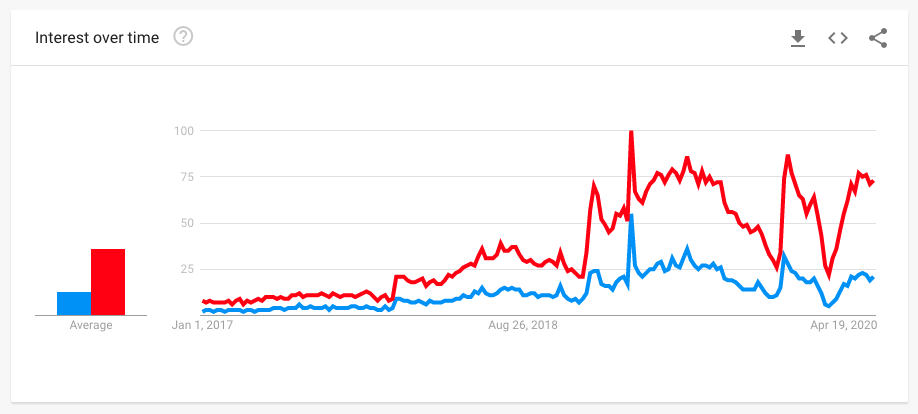
A keto diet ‘aims to mimic the effect of fasting’. As a high fat and low carb diet, it has become popular for weight loss, but it’s also popular as a way to reduce high blood pressure, improve mental performance and, according to Great Ormond Street Hospital, help with epilepsy.
With the growing demand for food that maximises nutritional intake for optimal health, keto and general low carb diets are likely to be big in 2020 and beyond.
Versatile Vegetables: Cauli As Carbs
Building on the demand for low carb foods, and the world’s continued love of pizza and other bread-based foods, cauliflower has found a new use: as dough. Cauliflower pizza is now a thing and as a 2020 food trend it might not be the most widespread but it is on the rise. This is in part due to the keto converted, but also those who are gluten free and in need of a new way to enjoy their favourite glutenous foods. Cauliflower is being used as a replacement for pizza dough but also for pasta with cauli gnocchi – reaching peak fad with a new Trader Joe’s pack going on sale.
Enhanced Eating: Collagen Powders & Pea Protein
Making every meal count towards your optimal nutritional intake has led many fitness and food enthusiasts to look at ways of making their meals do more than just feed you. According to The Standard, you can’t make the perfect health smoothie without a special booster, like collagen powder or pea protein.
Collagen has a number of benefits for our skin, joints and heart. As a result, it has become a go-to ingredient in skincare products, supplements and now your food and drink. Similarly, pea protein has become a popular addition to shakes and snacks to increase the protein – which can be beneficial if you are working out regularly.
Mental Clarity: CBD Infusions

Cannabidiol or CBD comes from hemp and is legal and won’t get you high. Its medicinal purposes, quelling anxiety and mediating pain, has led to it becoming one of the most unusual ingredients to find its way into foods and drinks of all kinds. CBD is often consumed as an oil, making it easy to add to recipes, shakes or coffee.
Beyond The Food Trends Of 2020
When thinking about the future of food and drink, it’s worth paying attention not only to their enjoyment but to their impact on health. Healthy choices were already popular, then people got smarter about what nutrients were in foods and tapped into superfoods. Now, food trends suggest we’re moving away from traditional fruits and vegetables and looking to plant extracts and niche nutrients that have an even bigger impact on our health.
UK Food trends 2019: What are we eating this year?
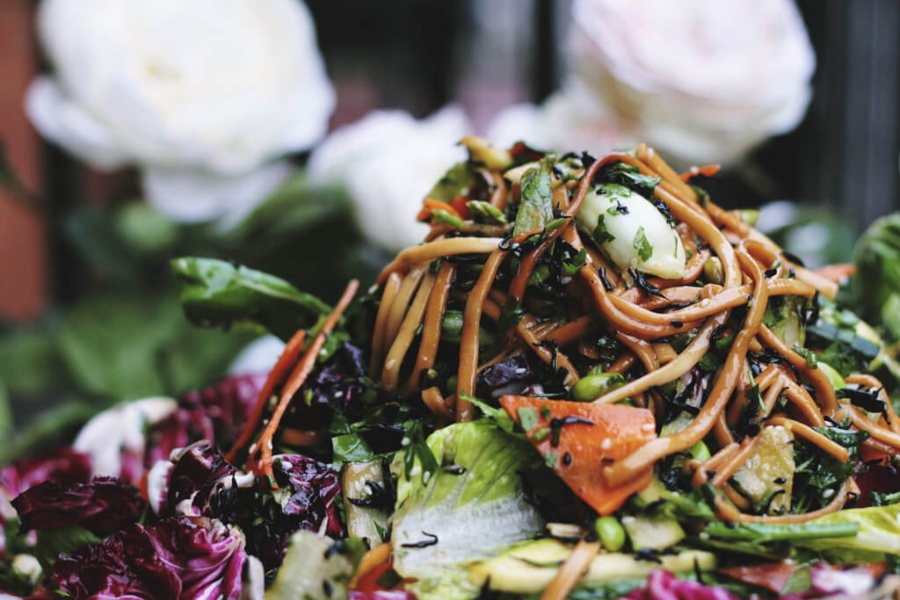
Foodies are no longer the only people who care about how to make the most from every meal. There is a clear, continued push for innovative food ideas across global drink corporations, established restaurants and new food startups. Gregg’s vegan sausage roll got people talking and buying and Veggie Pret went from a one month pop up to four locations in less than 3 years. The market is calling, will you answer?
Health benefits, produce quality and sustainability are all important not only for food and drinks brands but their consumers. Here, we break down what we’ll be eating, why we’ll be eating it and how you can use that to make your business a plate-leader for consumers.
Food that does good
We care more about the food that we eat more than ever before with 73% of consumers saying they would change what they would consume based on environmental impact. This means that food and drinks brands need to care as well.
So, with words like organic, fairtrade and considerations from environmental stewardship to animal welfare orbiting eating habits, what are we seeing as the most important, and therefore valuable, food trends for do-gooders?
Low carbon footprint foods

Diet, sourcing and packaging are all ways in which consumers are looking to lower their carbon footprint. However, all of these choices are only possible when there are food and drinks brands who are willing to provide, with some being easier to access than others.
Going vegan or vegetarian, if you haven’t already
Veganism has been skyrocketing in popularity in the last five years. Yes, this is partially down to the idea of fad diets, but with younger generations of consumers coming into the market and becoming a valuable buying set, food brands can’t afford to ignore vegans. Offering alternatives to your most popular foods can be enough to attract new businesses and retain those customers looking to make the change in the new year.
One of the ways in which veganism is becoming more widespread is with like-for-like replacements to some of the most popular meats with vegan alternatives. For example, the Jackfruit has gone from unwanted in India to best of the best in vegan havens like London. With a texture likened to pulled pork, a staple of open air hipster markets, it has appealed to former meat eaters looking to make an ethical change.
Not everyone is convinced of making the change to veganism. Although food companies can make significant gains with vegan alternatives, vegetarianism continues to be a common middle ground for many consumers. The market for vegetarian foods has already been steady for many years and since it has more leniencies, has led to greater competition, for example, with vegetarian sausages.
The best vegetarian sausage has yet to be created; at least according to Good Housekeeping’s reviews of vegetarian sausages, which means it could be you that finally cracks the recipe. While there are more vegans than ever before, we are also seeing a push towards flexitarianism, where meat is sometimes consumed, along with vegetarianism. Meat free alternatives are in demand but aren’t yet fully catered for in a satisfying way.
There is a particular call for the familiar with meat-free foods, consumers want the cruelty-free benefits of vegetarian foods in recognisable forms. Burgers, sausages and mince are all key to classic dishes, particularly in British foods. Arguably, Quorn dominates this market, with Linda McCartney often being cited as the best vegan sausages, all of which has caused supermarkets to come up with their own vegan ranges. It’s touch and go how long the vegan burger might last, however, with the EU hoping to ban certain terms to prevent confusion between meat and meat-free dishes.
Looking for inspirational vegan recipes? We’ve delved into the how and why to offer vegan dishes to your customers, and the odd inspirational recipe too.
Motherless meat is (almost) here

Lab grown meat, also known as motherless meat, has been a source of fascination for the food industry for a little while now but has yet to hit the big time. 2019 could be the year, with India leading the way.
Motherless meat is created from animal cells, harmlessly extracted, and is therefore cruelty free. It doesn’t come with the environmental and ethical baggage of farming and so is seen by many of the future of meat eating. Getting onto this trend, while still in its infancy would definitely be profitable for food businesses. But watch out as, since this is such a new phenomenon, there has been speculative reporting about just how eco-friendly motherless meat is and whether the production methods are worse for the earth than traditional farming.
Going Plastic Free
The Blue Planet II effect has woken up the entire world to its need to reduce its waste, particularly plastic. From a government pledge to ban plastic straws, cotton-buds and drinks stirrers, to Glastonbury festival announcing that it won’t be selling single use plastic drinks bottles on site this year; plastic and waste in the food industry is a hot topic. If you look to reduce your plastic use in any way, tell your consumers. If it’s a promise that you feel a step too far, try it for a week, or month, or one day a week! Nobody wants to contribute further to the destruction of the planet and encouraging people to eat with you because of your goals with your environmental impact is a real way to lure in customers at the same time as genuinely doing good. You can learn more here.
Wellness ingredients
CBD oil is the new hemp tea

With the legalisation of marijuana in many US states, along with movement on the use of medical marijuana in the UK following some high-profile cases, interest in “hemp” and cannabidiol (CBD) has skyrocketed. As a result, numerous businesses are looking to develop the ways in which they tap into the potential health benefits of these ingredients.
If you are considering tapping into this trend then you first need to understand the differences between cannabis, hemp and marijuana, which many use interchangeably and incorrectly. The main distinctions can be summarised as follows:
- Cannabis is the name for a family of plants which has two primary classifications:
- Indica and Sativa.
- Marijuana can be considered a member of either the Indica or Sativa families
- Hemp is only considered to be a member of the Sativa family
Like chamomile and other similar herbal teas, hemp tea is said to be good for reducing stress, anxiety, insomnia and helping with chronic pains. However, research has found more tangible benefits in hemp seeds, namely as a protein source, but also in helping to aid digestion. As with other popularised milk alternatives, Good Hemp milk is looking to become the new go-to for customers with an eye for non-cow milks.
CBD oil isn’t new, but its usage as an ingredient is becoming more commonplace. Unlike the more commonly smoked leaf form of marijuana, CBD oil is an extract that produces no psychoactive effects. This means that it can be added to food and drinks to pass on its benefits; pain relief, reduction of anxiety and alleviation of cancer treatment symptoms to name a few, more simply and in a flavourless way. There are all kinds of ways to incorporate CBD oil with a food or drinks brand, and now is the time to do it as global corporations like Coca-Cola are taking notice.
Get your probiotics fix from fermented foods
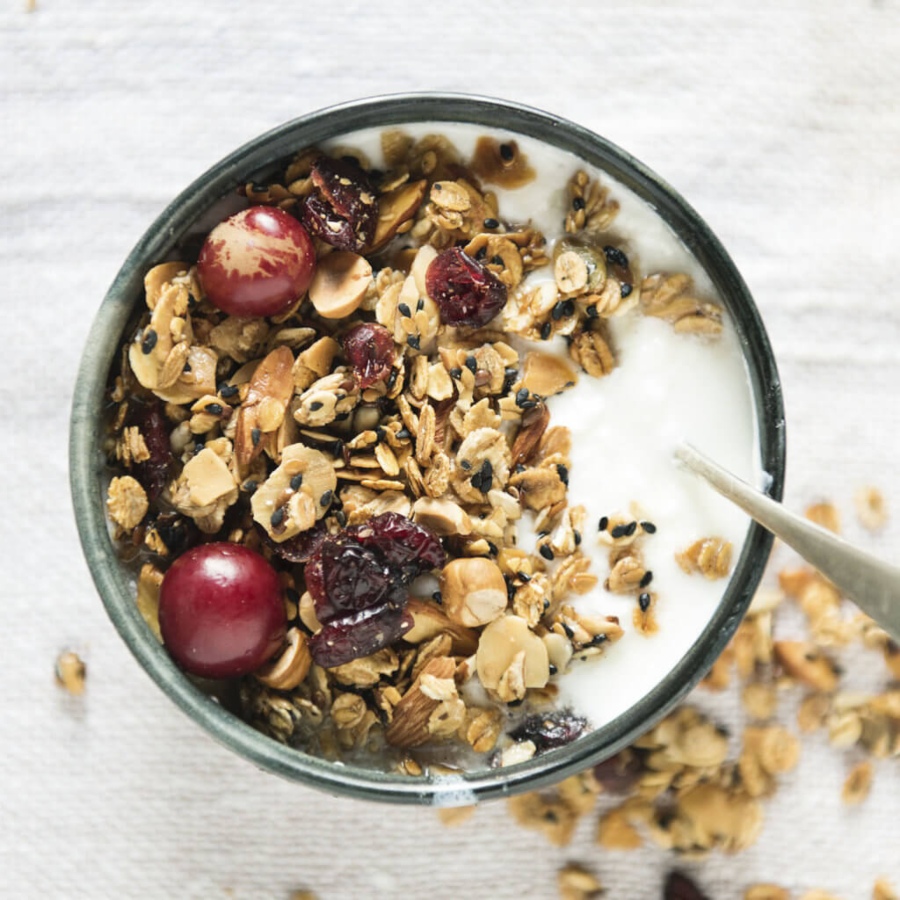
Probiotics are most commonly linked with yoghurt, thanks to robust and continuous marketing from yoghurt and probiotic drinks brands like Yakult. But with the changes in how dairy is being consumed, and the environmental effects of the farming industry, consumers are looking to fermented foods for their doses of probiotics.
Fermented foods can be made from leftover vegetables, giving it an eco-friendly appeal, while offering the health benefits of probiotics. Since world cuisine is also at the forefront of trends, in particular from Asian regions following the popularisation of foods like sushi and ramen in recent years, the iconic fermented food kimchi is ideally placed to be included in new foods.
For those who aren’t in the know, probiotics are produced during the fermentation process and have been used to improve digestive health. In particular helping those with bloating, indigestion and constipation. It has even been linked to health benefits for your skin. Popular fermented foods include Sauerkraut, Kimchi, Miso and Tempeh. Add these to your list of ingredients to drive traffic for your gut-conscious consumers.
Fads and new favourites
Fads have most often in the recent (Western) memory been about making a food or drink “unicorn”, whatever that seems to mean… Though these have always been flash in the pan fads. More long lasting trends in food and drink have focused on finding that elusive treat or undiscovered edible treasure with staying power.
(Not so) Guilty pleasures
People want to have the foods they love, and they want them to be less “bad” for them. Once upon a time this meant choosing froyo over ice cream, but no longer. There are a whole host of almost as good as the original versions of consumer favourites that food brands should look at offering in 2019.
Can hummus be frozen? Yes, and made into ice cream

Have you ever wondered “Can hummus be frozen?”. Well, someone has, or rather a few someones have. Classic hummus can be frozen for up to 4 months and used as a healthy snack with carrot sticks or pitta bread, but that is only the tip of the chickpea. Hummus ice cream is looking to take the vegan world by storm.
The healthier ice cream market has been quietly developing in the past few years, in part in answer to the rise of veganism, but also as a tie-in to the fitness focused. Halo Top is a high protein, low-carb ice cream, which was the most popular ice cream in America in 2017, while vegan ice cream has appeared in dedicated brands like Booja-Booja and vegan versions of favourites from Ben and Jerry’s. Whether you have your own ice cream twist or are looking to include an alternative in your dining, now is an ideal time to get involved.
Seasonal dieting for summer and sobriety
Trendy is always on trend, it’s about the new as much as it’s about what we should be eating, meaning these aren’t necessarily foods that will last in the long term. If you aren’t convinced that you want to convert your food business to target one of the above food trends then it’s likely your consumers aren’t either.
Instead you could consider adhering to the seasonal diets and offering options with your food and drinks to test the water of interest in your consumer base. Popular month long diet trends include Veganuary and Sober October, but you needn’t limit yourself to these two months as consumers are opportunists and could make a change at any time of the year.
Mocktails for kids? Non-alcoholic cocktails are for adults too.
As far back as 2016, sobriety was being reported as on the rise among young people. Mocktails for kids, as well as adults, is now a viable unique selling point for a brand. This trend isn’t about leaning into fancier juice combinations, or the ever growing number of alcohol free Pimms recipes out there, instead it’s about emulating the complex flavour profiles of cocktails, but as non-alcoholic mocktails. Well regarded restaurants like Duck & Waffle and global drinks brand Diageo are already on board with non-alcoholic spirits, suggesting that we can expect a surge in new varieties in 2019 and beyond. The market is wide open for a food and drinks company that can capitalise on cocktails without alcohol.
Supper clubs

2018 was a huge year for supper clubs in the UK, especially in London. Dining on fine cuisine with a small group, dinner party style but with strangers, seems set to continue in 2019 and beyond. Supper clubs have also taken on charitable twists and there is room for more ways in which these dining experiences can tap into the trends of the year.
With supper clubs, food businesses can cater to specific diets, like vegan or gluten-free, and introduce new people to new ways of dining. Aligning a brand with an eco-conscious or ethical initiative is a great way to create a buzz around a food and drinks company. Similarly, using food as a gateway to culture with a humanitarian angle, like the Syrian Supper Club which aims to raise money for Syrian refugees with their evenings of culinary excellence.
The TL;DR for 2019 Food Trends
What 2019’s food trend and forecasts show us about the year ahead is that food and drinks companies need to be not only supplying options for those diners looking to make an eco-friendly, ethical choice in what they consume, but also to be advocates for it.
Veganism is on the rise and only going in one direction. Superfoods are getting harder to ethically source, due to increased demand causing environmental damage, as was shown by the increase in demand for avocados. Even once reliable industries such as beer and spirit brands are seeing disruptors succeeding with alcohol-free alternatives.
The best thing a food and drinks brand can do in 2019 is to stay informed, capitalise on trends in moderation, and to expect that this could all change by the end of the year.
Proper Food Trends to Watch Out for 2018
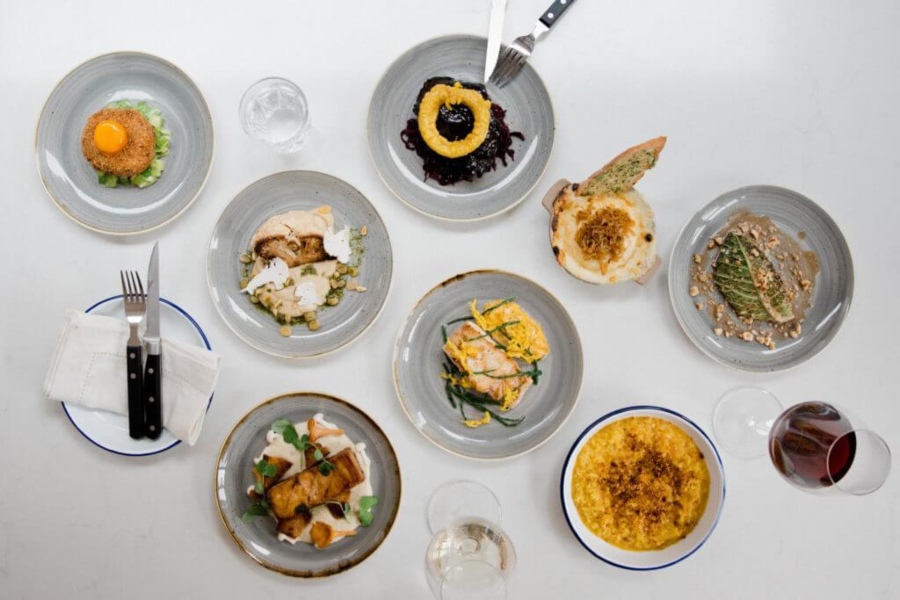
The food and drink industry has been through a period of rapid proliferation and evolution over the last ten years. The global recession created instability and uncertainty which meant large manufacturers managed their risk through M&A tactics or a consolidation of their own affairs. This, in turn, brought about opportunities for smaller, more agile producers to set up shop and capitalise on, and even induce, new food trends. This meant that the rate in which trends came and went was hugely exaggerated; the next trend was just around the corner and so was the person to mop up the opportunity.
Since Brexit landed (or didn’t land or who knows what may or may not happen) the mood has changed. We are again in a period of genuine uncertainty and the producers that were thriving under those conditions now have to take stock.
This is having an impact on consumer trends and we are now in a postmodern food world where the trend of yesterday has become a pastiche; we are savvier to marketing ploys than before.
‘Artisan’ is no longer a badge of quality but an undercover sales agent. This doesn’t mean that the market has stopped evolving, far from it. New entrants are finding more profitable ways to enter the market using initiatives such as ours, where they can license a commercial kitchen space rather than investing heavily in capital at the early stages of business.
Our kitchen facilities are now available in Shoreditch, Bermondsey, Bethnal Green and Vauxhall and have provided a number of innovative food businesses with the platform to launch in a tough economic climate.
So if the evolution hasn’t stopped, what has it done? Well, put simply, it’s evolved…
Celebrating Good Food
Just think for a second: have you ever seen anyone on a faddy diet smiling in any way other than smugly? No? I thought not. Want to know why? It’s because they’re unhappy! Faddy dieting has been punitive and focussed on denying yourself certain foods or food groups but this cannot continue. We need to celebrate the good in food.
As a trend, health is going to be a key focus for many years to come but the way it’s consumed will change. Superfoods have fallen in and out of fashion but they are a great example of celebrating food benefits rather than criminalising food baddies. Watch out for a rise in the use of spices and citrus additions to improve food flavours and supporting the body to break down fats.
Proper Food
This food trend for 2018 is born out of the same postmodern frustrations as the new health direction. Our obsession with self-denial in the pursuit for a better body has left some food stuffs feeling unloved. Carbs have been the enemy for a long time but I was delighted to see some #bringbackbread tweets recently.
Although I do endorse the moderation messaging, carbohydrates, whether simple or complex, must form part of our repertoire. We have enough crap weather to deal with in the UK that we at least need proper food, we need comfort food and we need to love our food. So expect to see a move back to proper food in 2018 to fill our plates and social media feeds with pies, pastries, pasta dishes and amazing breads!
Food On The Hoof
This trend isn’t going anywhere. We love to eat and explore new foods. We love to socialise. We love to be busy. So we will always love to eat on the hoof. The sight of a stationary trailer on the high street used to signal sweaty burgers, greasy walls and even greasier hair nets but now it carries a mark of intrigue and interest. If you’ve ever seen the Jon Favreau classic food film Chef then you’ll fully appreciate why street food is exciting.
So what will be the cuisine trends of 2018? Well, major global sporting events are usually a good barometer of which country’s food will come into fashion so I anticipate Russian food to rise to the top at least for the summer months. As well as that I expect to see a rise in home comforts hitting street food vans: grilled cheese, quality pies, fish and chips and maybe even a roast dinner or two on the go!
So there you have it: my proper food trends to watch out for in 2018. Any comments or questions save them for January 1st 2019!
3 food trends taking London by storm in 2017
By Lea Tierney
It’s true, there are food experiences a-plenty in London this year; from the sublime to the bonkers but rather than discuss fads. In this article we’re going to look at the food trends that you need to keep an eye out for in 2017. Of course, you don’t always need to watch the trends, sometimes you can make them… But how will you do that without a kitchen to call your own? Well, just find a great value kitchen to license in a densely populated city like London, and you’ve got the most important step out of the way to start marking your trend on the world.
Here are the 3 food trends set to stay for 2017.
Wellness Watering Holes
The Wellness scene in London is positively booming and with a growing crowd of city dwellers desiring a more holistic approach to health, we’re seeing this reflected in the dining opportunities on offer in 2017. Whilst “clean eating” has come under scrutiny and featured highly in the media of late, there’s no escaping that wellness focused foodies want the freedom to dine out on nutritious, great tasting food.
The recently opened Bel Air, with their highly Instagram-able menu is promising to offer just that; lunch offerings include the delicious sounding black bean falafel with five greens quinoa salad, tomatillo salsa & avocado lime “mayo”, and the coconut, pumpkin & green lentil daal, with turmeric & cardamom spiced soya yoghurt and shaved coconut. Plus, all of the food at Bel Air is handmade from scratch without the use of refined sugar.
There’s no shortage of chefs making veggies the star of the plate – demonstrating the power of trend number 2…
Plant Powered Plates
With the growing profile of the vegan movement, courtesy of campaigns such as Veganuary, it’s no surprise that plant based options are set to be on the rise in 2017. For those opting for a plant based lifestyle and signed up to Veganuary, it is a choice likely to stick. According to their 2016 survey, “many people (about 38%) may be continuing to consume a reduced level of animal products compared to before Veganuary” and, according to their website, over 542,000 people in Britain are following a vegan diet.
Aside from numerous chains offering vegan menus or adaptations for January, several new eateries are set to appear on the scene offering plant based fare. Amongst these is the highly anticipated The Clifton. Set to open in March 2017, the historic pub is getting a new lease of life from Ed and Ben Robson – with a menu to match, as they are committing to providing vegan and gluten free dishes as part of their offering. Naturally that leads us nicely into trend number 3…
Free From Feasting
Far from being a dietary fad, the number of people going gluten free is increasing. Coeliac Disease affects around 1 in 100 people but the number of people affected by gluten intolerance is unknown. With the growing awareness of the impact of diet on health and the rising popularity of ‘free from’ bloggers and media personalities, gluten free dining looks to be much more widely available in 2017.
Promising a range of comforting and nourishing gluten free dishes, the opening of the new Maple & Fitz store, to be named Maple & Kings, highlights the increasing trend towards providing gluten free options. These offerings are expected to include, amongst others, gluten free rhubarb-pomegranate-oat pancakes with coconut yoghurt and maple vegan butter and, looking at their existing range of gluten free treats, is likely to be accompanied by “the best gluten free brownie”. Maple & Kings are set to open in March 2017 so it may be a little early to get in the queue for that brownie just yet…
There’s a clear link between these 3 trends; wellness focused dining, plant based options and gluten free provisions are all essential to the more aware consumer that is emerging.
2017 is shaping up to be a feast for all!
About the Author of 3 food trends taking London by storm in 2017
I’m Lea, the face behind Can Eat Attitude; I’m a Coeliac Vegan, freelancer and have a passion for nutrition and food. On my blog, I highlight the amazing and nourishing things you CAN eat on a “restricted diet” through easy wholefood, plant based and generally “friendly” recipes, some cool places to eat out safely and positive experiences to try alongside your “can eat” attitude.
Instagram: @can_eat_attitude



